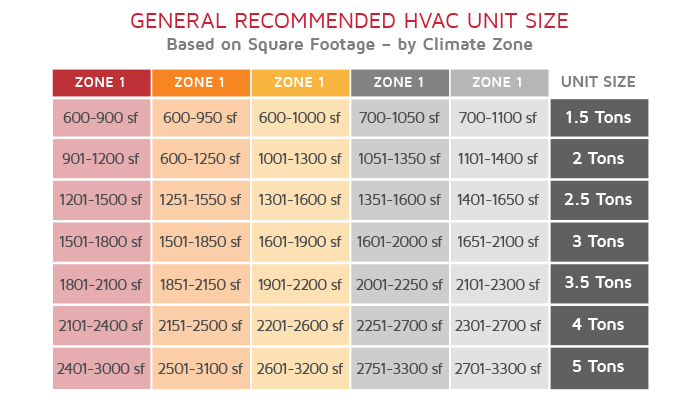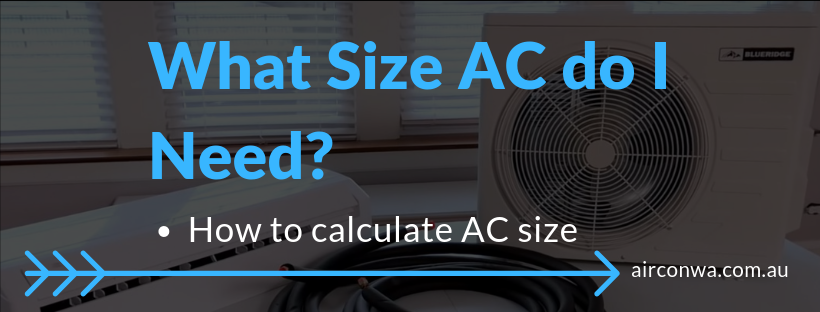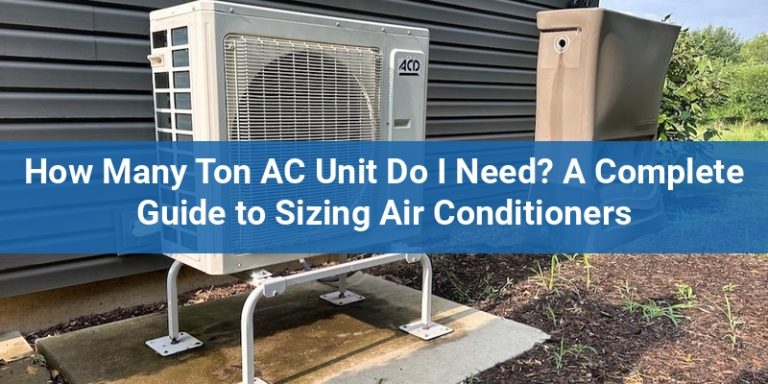What Size Ac Unit Do I Need For My House

Choosing the Right AC Size: A Comprehensive Guide for Homeowners
Selecting the appropriate size air conditioning unit is crucial for maintaining a comfortable and energy-efficient home. An improperly sized AC can lead to various problems, including poor temperature control, increased energy bills, and premature system failure. This guide provides a detailed overview of how to determine the correct AC size for your house, considering factors such as square footage, climate, insulation, and more. We'll also delve into efficiency ratings, brand comparisons, and essential maintenance tips to help you make an informed decision.
Why AC Size Matters
Many homeowners assume that bigger is always better when it comes to AC units. However, an oversized AC cycles on and off too frequently. This short-cycling prevents it from properly dehumidifying the air, leading to a damp and uncomfortable indoor environment. It also wastes energy, increasing your utility bills and stressing the components, shortening the system's lifespan. Conversely, an undersized AC struggles to cool the house adequately, especially during peak summer months. This results in inconsistent temperatures, overworked equipment, and higher energy consumption as it runs constantly trying to reach the desired temperature.
Determining the Correct AC Size
The industry standard for measuring AC capacity is in BTUs (British Thermal Units). One BTU represents the amount of energy required to raise the temperature of one pound of water by one degree Fahrenheit. For residential AC units, capacity is often expressed in "tons," where one ton equals 12,000 BTUs. Determining the right AC size involves several key factors:
1. Square Footage
A primary factor in determining AC size is the square footage of the area you need to cool. As a general rule of thumb, you'll need approximately 20 BTUs per square foot. Therefore, a 1,000 square foot house might require a 20,000 BTU (approximately 1.67 ton) AC unit. However, this is a simplified estimation, and other factors can significantly influence the required capacity.
Example: A 1,500 sq ft home might initially seem to need 30,000 BTUs (2.5 tons). Keep reading, because this is just a start.
2. Climate
Your local climate plays a critical role in determining the appropriate AC size. Homes in hotter, more humid climates require higher BTU ratings than those in milder regions. Consider the average summer temperatures and humidity levels in your area. Consult with a local HVAC professional to get specific recommendations based on your climate zone. For instance, a home in Arizona will need a more powerful AC than a similar-sized home in Maine.
3. Insulation and Windows
The quality of your home's insulation significantly impacts its cooling needs. Well-insulated walls and ceilings prevent heat from entering the house, reducing the AC's workload. Similarly, energy-efficient windows minimize heat gain from sunlight. If your home has poor insulation or single-pane windows, you'll need a larger AC unit to compensate for the increased heat transfer. Upgrading insulation and windows is often a more cost-effective long-term solution than simply installing a larger AC.
4. Sun Exposure and Shading
The amount of direct sunlight your home receives also affects its cooling needs. Homes with extensive south- or west-facing windows will experience more heat gain than those with ample shading from trees or overhangs. Consider the orientation of your house and the amount of shading when determining AC size. Adding awnings or planting trees can help reduce solar heat gain and lower your cooling requirements.
5. Number of Occupants
The number of people living in your home also contributes to the cooling load. Each person generates heat, which the AC must remove. As a general guideline, add approximately 400 BTUs per person. For larger families, this can significantly impact the required AC capacity.
6. Heat-Generating Appliances
Appliances such as ovens, stoves, clothes dryers, and computers generate heat that contributes to the overall cooling load. If you frequently use these appliances, you'll need a slightly larger AC unit to compensate for the additional heat. Consider the types and frequency of appliance usage when determining AC size.
The Manual J Calculation
The most accurate way to determine the correct AC size for your home is to perform a Manual J load calculation. This comprehensive assessment considers all the factors mentioned above, along with other variables such as air leakage, ductwork efficiency, and the specific characteristics of your home. A qualified HVAC professional can perform a Manual J calculation to determine the precise cooling load for your house. This ensures you select the right size AC unit for optimal comfort and energy efficiency. Don't rely solely on square footage; a Manual J calculation is the gold standard.
Understanding Efficiency Ratings: SEER, EER, and HSPF
When choosing an AC unit, it's essential to understand the different efficiency ratings. These ratings provide insights into the unit's energy performance and can help you estimate your potential energy savings.
SEER (Seasonal Energy Efficiency Ratio)
SEER is the most common efficiency rating for AC units. It measures the cooling output of an AC unit during a typical cooling season divided by the total electrical energy input during the same period. The higher the SEER rating, the more efficient the unit. Modern AC units typically have SEER ratings ranging from 13 to 28. The minimum SEER rating currently mandated by the U.S. Department of Energy is 14 in most regions.
EER (Energy Efficiency Ratio)
EER measures the cooling output of an AC unit under specific, fixed conditions (e.g., a specific temperature and humidity level). While SEER provides a more comprehensive measure of seasonal efficiency, EER can be useful for comparing the performance of different AC units under identical operating conditions.
HSPF (Heating Seasonal Performance Factor)
HSPF is primarily relevant for heat pumps, which can both heat and cool your home. HSPF measures the heating efficiency of a heat pump over a typical heating season. The higher the HSPF rating, the more efficient the heat pump is at heating your home.
Popular AC Brands and Models
Several reputable brands offer a wide range of AC units with varying features, efficiency ratings, and price points. Here are a few popular options:
- Carrier: Known for their high-efficiency units and advanced features, Carrier offers a wide range of AC models suitable for various needs.
- Trane: Trane is another well-respected brand known for its durable and reliable AC units. They offer a variety of models with high SEER ratings and innovative technology.
- Lennox: Lennox offers a range of AC units with a focus on energy efficiency and quiet operation. Their premium models feature advanced features such as variable-speed compressors.
- Rheem: Rheem provides affordable and reliable AC units suitable for budget-conscious homeowners. They offer a range of models with decent SEER ratings and solid performance.
- Goodman: Goodman is a budget-friendly brand offering a range of AC units with competitive pricing. While their SEER ratings may not be as high as premium brands, they provide a good value for the money.
When comparing different models, consider factors such as SEER rating, noise level, warranty, and additional features such as smart thermostats and air purification systems. Read reviews and compare prices from different retailers to find the best deal.
AC Unit Pricing and Installation
The cost of an AC unit varies depending on its size, efficiency rating, brand, and features. A basic AC unit for a small home might cost around $3,000-$5,000, including installation. Larger, high-efficiency units for larger homes can cost upwards of $8,000-$12,000 or more. Labor costs for installation will also vary depending on the complexity of the job and the location. It's essential to obtain multiple quotes from qualified HVAC contractors to compare pricing and services.
Important Considerations:
*Don't sacrifice quality installation to save a few dollars. Improper installation can negate the benefits of even the most efficient AC unit.*
Always choose a licensed and insured HVAC contractor with experience installing the type of AC unit you're considering. Ask for references and check online reviews before making a decision.
Warranties and Maintenance
Most AC units come with a manufacturer's warranty that covers parts and labor for a specific period. The length and coverage of the warranty vary depending on the brand and model. Be sure to read the warranty carefully to understand what's covered and what's not. Regular maintenance is crucial for maintaining the AC unit's efficiency and extending its lifespan. Schedule annual maintenance with a qualified HVAC technician to inspect and clean the unit. This includes cleaning the coils, checking the refrigerant levels, and inspecting the electrical components. Additionally, replace the air filter regularly (every 1-3 months) to ensure proper airflow and prevent dust and debris from clogging the system.
DIY vs. Professional Installation
While some homeowners may be tempted to install an AC unit themselves, it's generally recommended to hire a qualified HVAC professional. AC installation involves working with refrigerant, electrical wiring, and ductwork, which can be dangerous and require specialized knowledge and tools. Improper installation can void the warranty and lead to performance issues. A professional installation ensures the AC unit is properly sized, installed, and calibrated for optimal performance and efficiency. Professional installers also ensure local code compliance.
Conclusion
Choosing the right size AC unit for your home is a crucial investment in your comfort, energy efficiency, and the lifespan of your HVAC system. By considering factors such as square footage, climate, insulation, and conducting a Manual J load calculation, you can ensure you select the appropriate size unit for your needs. Research different brands and models, understand efficiency ratings, and hire a qualified HVAC professional for installation and maintenance. With careful planning and informed decision-making, you can enjoy a comfortable and energy-efficient home for years to come.
Remember to always consult with a qualified HVAC professional for personalized recommendations based on your specific home and needs.





:max_bytes(150000):strip_icc()/air-conditioning-chart-1152654_final-02-c37c8b4fdf08432baf378e8f0cb9d8e0.jpg)




